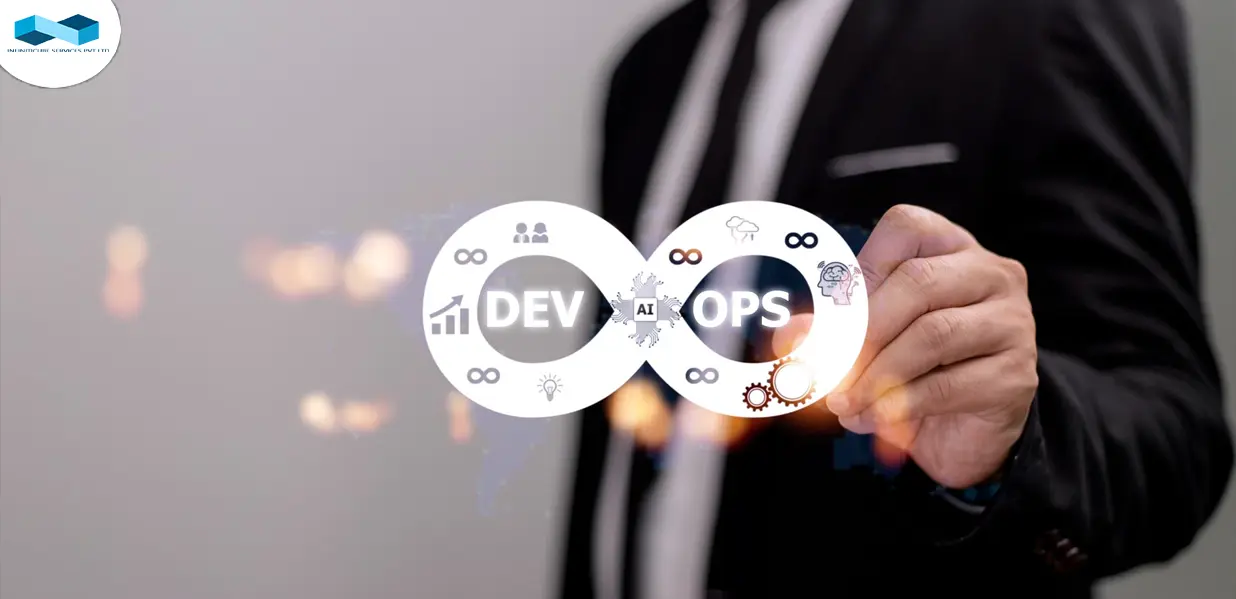Integration of Edge Computing Into DevOps Practices
In DevOps practices where agility and efficiency reign supreme, the fusion of edge computing with DevOps emerges as a game-changing force. DevOps known for its emphasis on collaboration, automation, and continuous delivery, has changed software development and deployment.
Like, edge computing functions bring computation and data storage closer to the data source, and offer benefits like reduced latency, optimized bandwidth usage, and enhanced user experiences.
When we talk about Integrating these two powerful tech paradigms, we can look ahead at a future with immense potential to foster innovation and streamline operations across various industries.
In this blog post, we'll delve into the integration of edge computing into DevOps practices. Let's examine each of these domains to grasp how edge computing can be seamlessly incorporated into DevOps methodologies, leading to improved outcomes.
Understanding Edge Computing and DevOps
Before exploring their integration, it is a must for you to get introduced to the essence of edge computing and DevOps separately.
Edge computing is a paradigm where rather than relying solely on cloud servers, data processing and computation take place closer to data source or endpoint devices. Advantages like reduced latency, enhanced data privacy, and the ability to manage large volumes of data generated by edge devices like IoT. It typically involves deploying computing resources at the edge network, whether within IoT devices themselves, on local servers, or in edge data centers.
Now, coming to DevOps, it is a collection of practices aimed at integrating development (Dev) and IT operations (Ops) teams to enhance collaboration, automation, and efficiency throughout the software development lifecycle. DevOps gives its complete focus to continuous integration, continuous delivery (CI/CD), automated testing, infrastructure as code (IaC), and monitoring and feedback loops to facilitate faster and more reliable software delivery.
Edge Computing into DevOps Practices
- Edge Device Provisioning and Management: DevOps principles streamline the management and provisioning of edge devices. Automated provisioning tools deploy necessary software components and configurations to edge devices, ensuring consistency and minimizing manual intervention.
- Continuous Integration and Testing at the Edge: Integrating CI/CD pipelines with edge computing enables continuous integration and testing of edge applications. This guarantees that updates and new features are thoroughly tested before deployment, preserving the reliability and performance of edge services.
- Edge-aware Deployment Strategies: DevOps methodologies advocate for deploying software in small, incremental updates—similarly, edge computing benefits from deploying lightweight, modular applications that can be easily updated and scaled. DevOps practices can be adapted to devise deployment strategies tailored for edge environments, facilitating seamless updates and rollbacks.
- Monitoring and Orchestration: Effective monitoring and orchestration are critical for managing edge environments. DevOps tools and practices can monitor edge devices' and applications' health and performance in real-time. Automated alerts and self-healing mechanisms can proactively address issues, minimizing downtime and optimizing resource utilization.
- Security and Compliance: Security is paramount in edge computing, given its distributed nature. DevOps practices emphasize security by integrating security measures into every stage of the software development lifecycle. This includes automated security testing, vulnerability scanning, and compliance checks for edge applications and infrastructure.
- Edge-to-Cloud Integration: While edge computing brings processing closer to the data source, seamless integration with centralized cloud resources is still necessary. DevOps practices facilitate the integration of edge and cloud environments, enabling data synchronization, workload orchestration, and hybrid deployment models.
Challenges and Considerations In Integrating Edge Computing Into DevOps
Integrating edge computing into DevOps practices poses several challenges and considerations due to complexities in deployment, management, monitoring, and security. Here are some key challenges and considerations:
Resource Constraints
- Edge devices typically have limited computational resources compared to traditional cloud environments.
- DevOps teams must optimize applications and deployment processes to operate efficiently within these constraints.
Network Connectivity
- Edge devices may operate in environments with intermittent or low-bandwidth network connectivity.
- DevOps practices must accommodate network limitations to ensure applications can function effectively despite potential disruptions in connectivity.
Diverse Hardware and Software Environments
- Edge computing encompasses a wide range of hardware and software platforms, each with unique characteristics and requirements.
- DevOps teams need strategies for managing this diversity, including standardized deployment processes and compatibility testing.
Deployment Orchestration
- Deploying and managing applications across a distributed edge infrastructure can be complex.
- DevOps practices should incorporate robust orchestration mechanisms to automate deployment, scaling, and updates while ensuring consistency and reliability.
Security
- Edge devices are often deployed in physically vulnerable or uncontrolled environments, making them susceptible to security threats.
- DevOps teams must implement comprehensive security measures to protect both the edge devices and the data they process. This includes encryption, access controls, and regular security audits.
Conclusion
In conclusion, integrating edge computing into DevOps practices marks a significant advancement in modern application development and deployment. By leveraging the capabilities of edge devices and distributed computing, organizations can tap into new avenues for innovation and efficiency.
However, this integration presents its own set of challenges, including managing resource constraints, addressing network connectivity issues, and ensuring robust security and monitoring. Despite these challenges, the benefits of edge computing in DevOps are evident, offering improved performance, scalability, and resilience for applications deployed at the edge.
As organizations strive to stay competitive, embracing edge computing within their DevOps workflows is increasingly vital. Partnering with experienced DevOps teams specializing in edge computing can empower businesses to harness cutting-edge technology confidently.
At Infinticube, we provide comprehensive DevOps services tailored to your requirements, integrating the latest advancements in edge computing technology. Contact us today to learn how we can assist you in driving innovation and achieving success in the era of edge computing.
Remember, the future of application development lies at the edge. Stay ahead of the curve with our DevOps consulting services and unleash the full potential of your products.
 June 27, 2025
June 27, 2025
 Balbir Kumar Singh
Balbir Kumar Singh
 0
0
 June 13, 2025
June 13, 2025
 Balbir Kumar Singh
Balbir Kumar Singh
 0
0









Leave a Reply